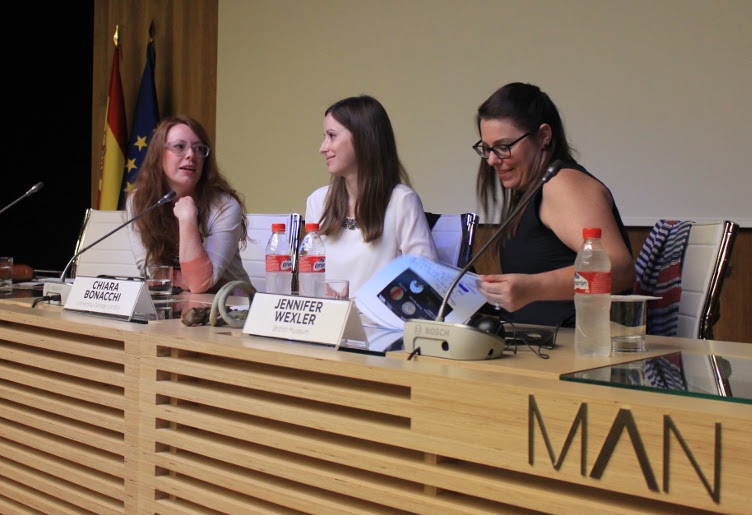Scifabric hosts many citizen science and public participation projects. We’ve noticed the best projects have one thing in common: successful community engagement. Whether, like Cities at Night, you require tens of thousands of volunteers or perhaps only a handful, like the Iceland Criminal Court project, the success of a crowdsourcing project lies in its ability to engage with a dedicated community. PYBOSSA software provides the tools to build thriving communities.
A head start
Citizen science lends itself to community engagement because it is collaborative and constructive by nature. Dr. Crispin Butteriss, Chief Practice Officer at online community engagement specialists Bang the Table, states that “if you can get your community to build or create something together, something that is bigger than themselves, and critically, if you can make it fun, you are likely to get people engaged”.
What’s in it for the volunteers?
Citizen science is a mutually beneficial exercise. While many hands make light work for project owners, participants enjoy a sense of place and belonging, and gain an opportunity to become a valued citizen of a community. Stewardship naturally follows: volunteers care about what they are observing and their community. This can offer a sense of self-importance to individuals who become valuable contributors to a larger research effort. This may also provide volunteers with a deeper interest in the research topic.

Like lions, citizen scientists make strong communities. Photo by Joel Herzog.
How to build a community
We’ve talked to owners of some of our most successful projects, including MicroPasts and LibCrowds, and paraphrased a few of Dr. Butteriss’ recommendations, to provide seven tips on how to build a strong community:
Understand motivations
The better you understand your contributor’s motivations, the better you can cater to their needs and maintain engagement. In the case of archeology project MicroPasts, key motivators include: the desire to learn or get training, the aesthetic pleasure of looking at archeological collections, the will to give back to a museum that was dear to them, the social motivation of helping out and contributing to advance scientific knowledge.
Trust and common goal setting
The more trust between volunteers and project leaders, the more successful a project is in maintaining volunteer interest. Discussing roles, responsibilities and expected outcomes openly and periodically helps to facilitate a positive rapport. Project owners should increase volunteers’ understanding of project goals by clearly communicating the project mission and achievements.
Mentor your most enthusiastic volunteers
Volunteers appreciate the opportunity to acquire new skills and develop relationships with project leaders. For example, Micropasts worked closely with a small group of motivated individuals to complete activities that require more advanced interpretation. Similarly, Cancer Research UK provided a dedicated group of volunteers with 25 minutes of training that allowed them to detect cancer cells with 95% accuracy.
Project owners Nora McGregor (British Library), Chiara Bonacchi (UCL) and Jennifer Wexler (British Museum) share tips on building a strong community. Photo by Scifabric.
Communication strategy
Having a sound communication strategy is vital to a project’s success, both to attract new contributors and keep it fresh in the mind of existing volunteers. Project owners should aim to create an interactive and cohesive online community. This might include a sustained social media campaign, a research blog with dedicated research resources, or press releases that drive traffic to projects. Oh, and appearing on Fox News doesn’t half help…
Convenience and flexibility
Volunteers need to be able to contribute when and how they want. Tasks should be relatively simple to begin with an opportunity of increased sophistication as a volunteer’s skills improve. Different people with various skills, time and knowledge will require different participation opportunities.
Spreading the word
Volunteers can become increasingly interested in educating the broader community about issues underpinning project goals.
Acknowledgement
Participants expect to be acknowledged for their contribution.

A bit of recognition goes a long way. Photo by Delaney Dawson.
PYBOSSA: Community-centred software
Scifabric recognises the importance of community and so we have developed a range of PYBOSSA features to help project owners grow their own communities:
Blog – each project has its own blog to share updates about the research, because sharing is caring…
Newsletters – users can integrate their projects with MailChimp to provide regular updates to their communities.
Social Login – users can sign in with Google, Facebook or Twitter credentials seamlessly, making it easier to create, or tap into, communities on these social fora.
TwitterBot – we’re working on a lovely TwitterBot that will take the tedium out of Tweeting.
Notifications – our webhooks triggers provide real-time analysis, so you can know exactly how active your community is. Do they need a little nudge to complete a particular task?
Open Science – every aspect of PYBOSSA is accessible to everyone. People are more likely to contribute to open, honest projects. Open science done properly!
Crowdcrafting – projects can be built on our Crowdcrafting platform, which boasts a substantial existing community.
Community matters
We know that community matters, so why not use some of our open source tools to help build one around your data analysis project. It may be your first step to something very worthwhile…
